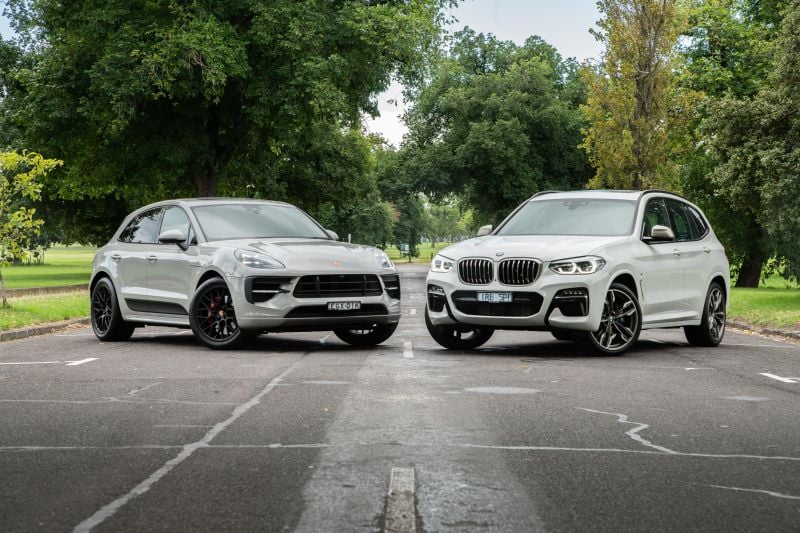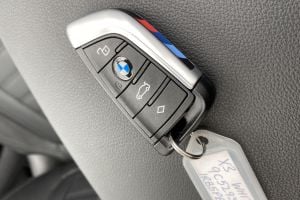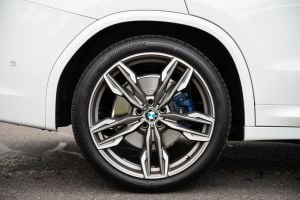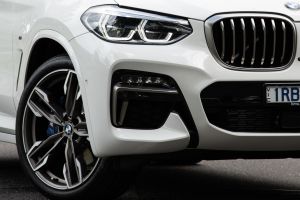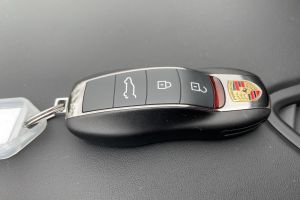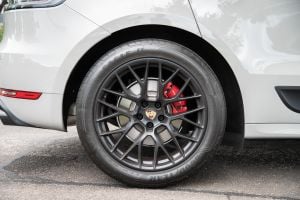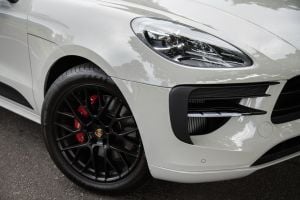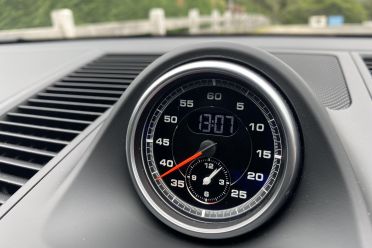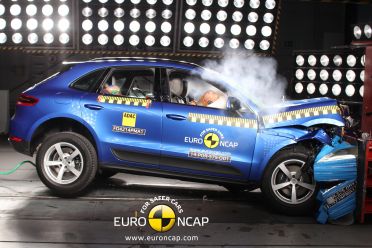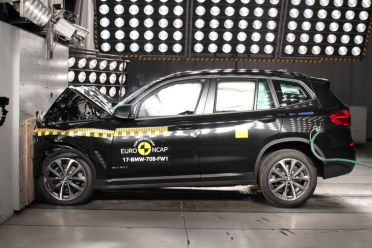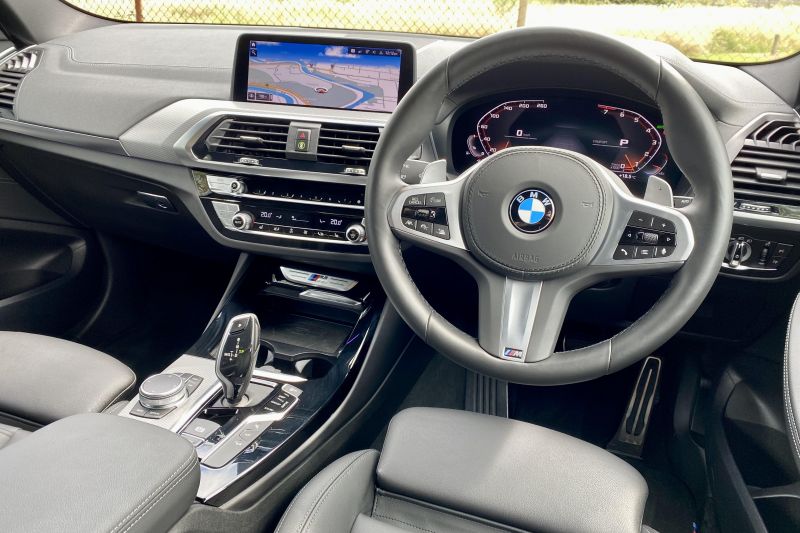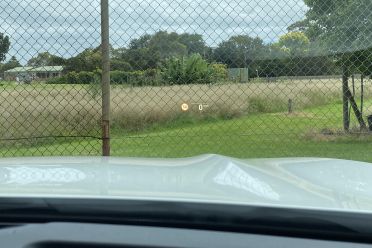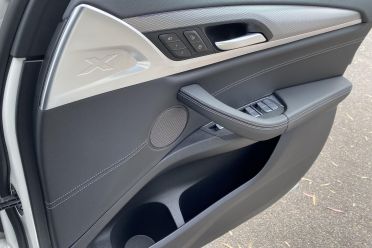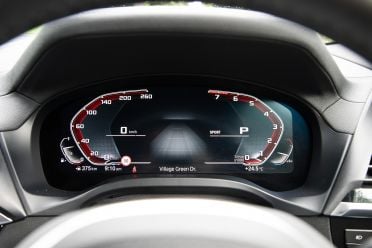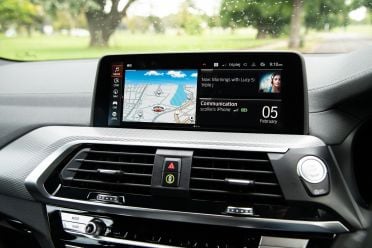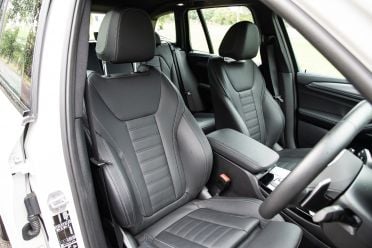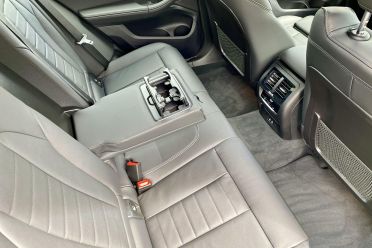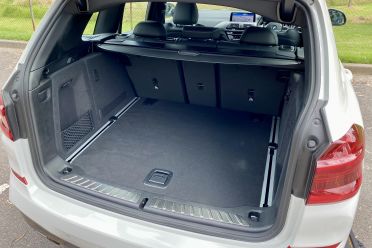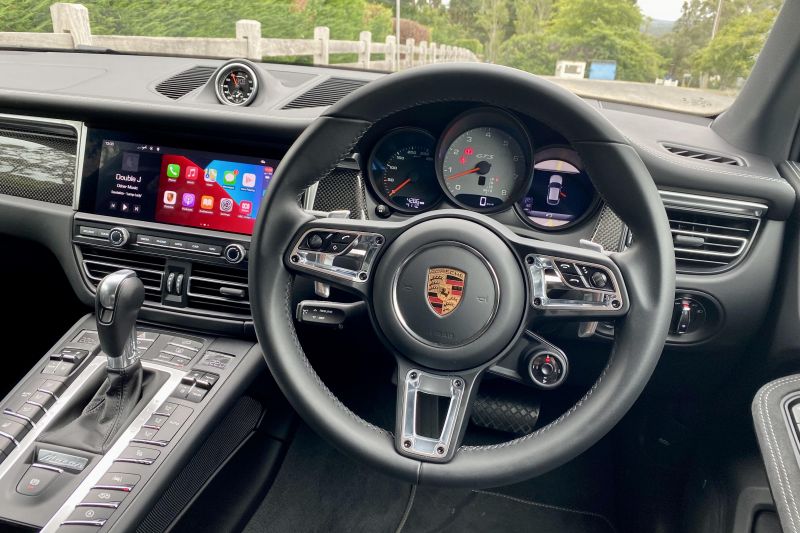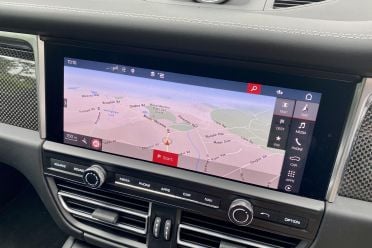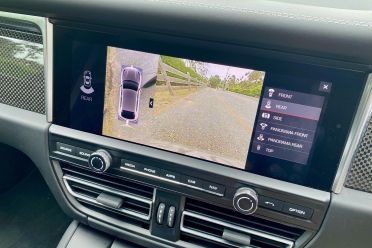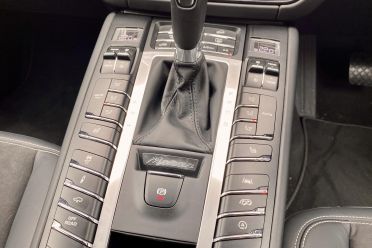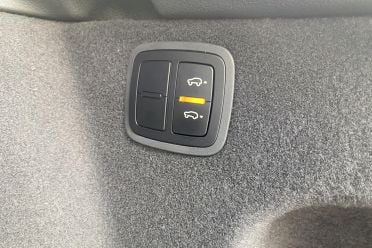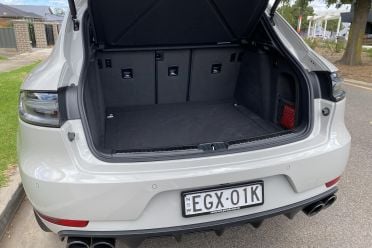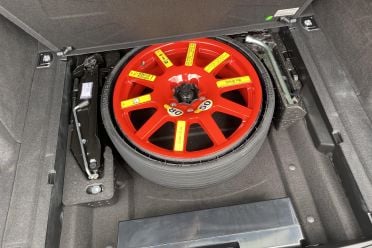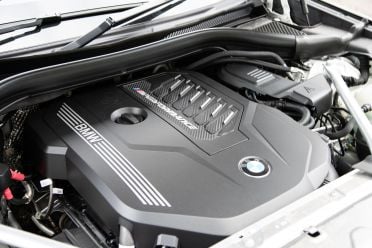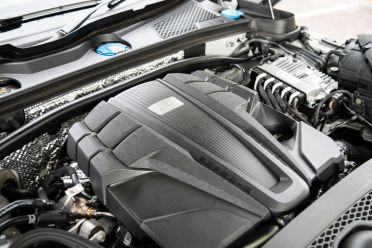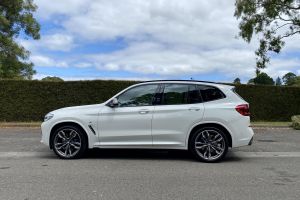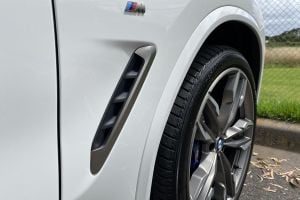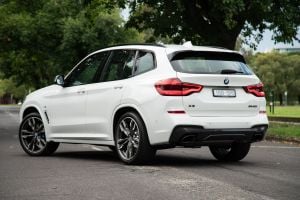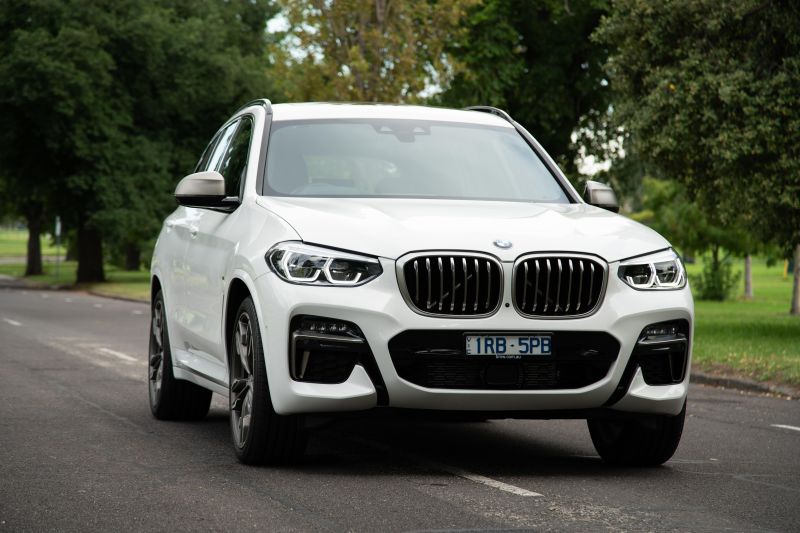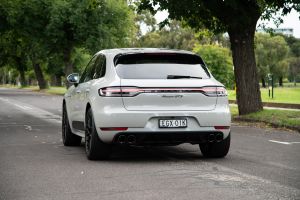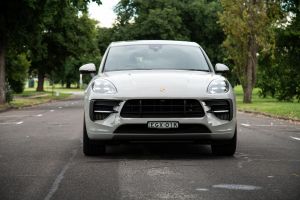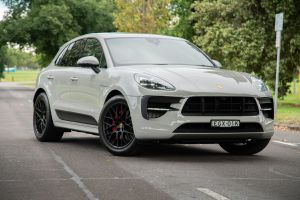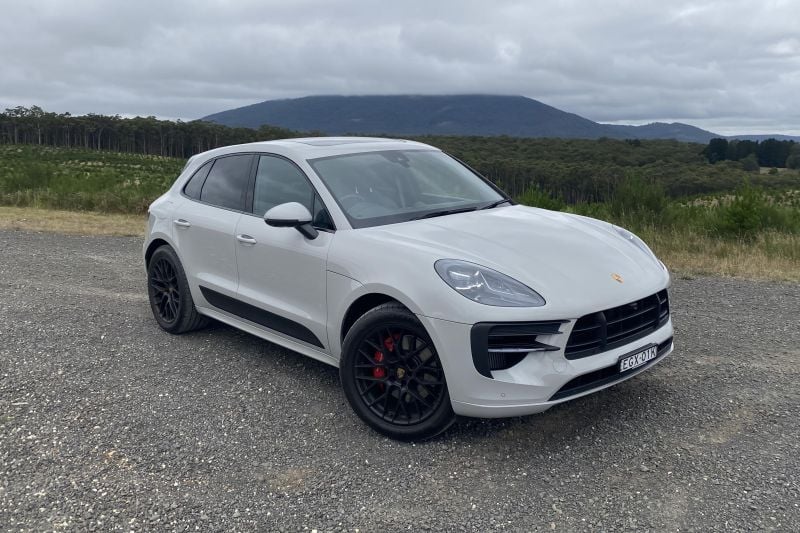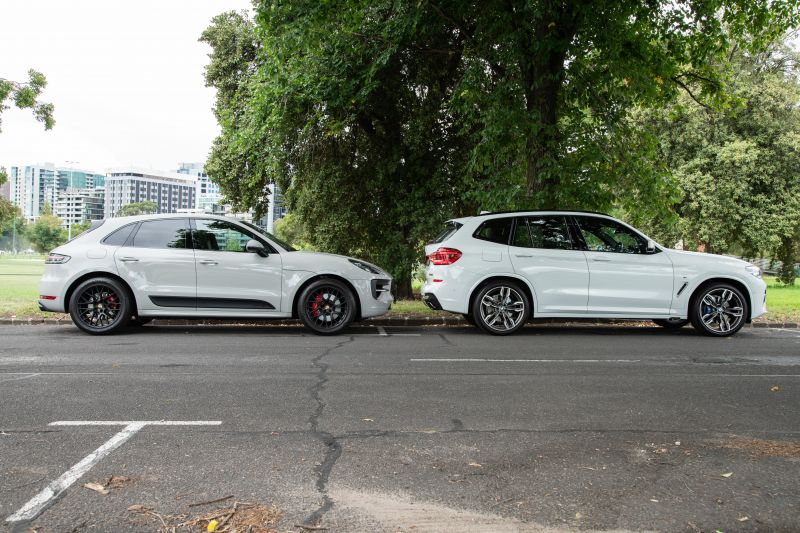If you want a mid-level performance SUV, then this pair of Germans are undoubtedly on your shortlist.
The BMW X3 is a segment staple. The M40i sits beneath the properly hardcore X3 M but still offers shove-in-the-chest acceleration in a practical body style.
The Porsche Macan is getting advanced in its life cycle, but updates have kept it sharpish and in GTS spec it lines up nicely alongside the Bavarian Bimmer.
How much?
When you’re talking about luxury cars, there’s the list price, the real price including taxes and after a haggle, and the price with the invariable list of options you’re bound to specify.
But for some frame of reference the BMW X3 M40i wears a list price of $113,900 including GST and luxury car tax, but excluding stamp duty, rego and dealer costs. By contrast the Porsche Macan GTS lists at $112,300. So, $1600 difference.
What do they compete with?
A new-generation Audi SQ5 isn’t far away, but right now the chief competitors for these performance crossovers include the hardcore and pricier (but memorable) Alfa Romeo Stelvio Quadrifoglio, tier-two Mercedes-AMG GLC 43, and perhaps the left-of-centre Volvo XC60 T8 Polestar.
What do you get?
Both come with features including big alloy wheels (21-inch in the BMW, 20-inch in the Porsche), automatic tailgates, adaptive LED headlights, proximity key fobs, electric-adjusting leather seats, sat-nav, Apple CarPlay, and digital radio.
The BMW alone offers a standard panoramic sunroof, heated front seats, full digital instruments (rather than partial like the Porsche), six more speakers and an extra 350W, a head-up display, wireless phone charger, and Android Auto.
Indeed, our BMW on test was bog standard, with no factory options fitted. If you’re inclined, you can pay extra for stuff such as ventilated seats, gesture control infotainment, an M Sport trim package, a TV receiver, and acoustic glazing. Metallic paint is $2000 extra, though the standard palette range is drab.
The Porsche, on the other hand, had about $30,000 worth of factory options fitted, and a list price of $142,650.
These included a GTS leather package with Alcantara ($8020), panoramic glass roof ($3370), self-levelling air suspension ($3100), Bose sound system with 14 speakers and 665W ($2470), the Sport Chrono package with driving mode switch on the wheel ($2390), carbon-fibre cabin inlays ($1770), a heated GT steering wheel ($1140), and the Porsche Dynamic Light System Plus ($950).
This is only scratching the surface of what’s available, too.
The nifty paint colour called Crayon costs $4970, though many of the metallic paint options (including green and gold-brown) are $2000.
Are they safe?
The BMW scored a five-star crash rating from safety tester ANCAP in 2017 (93 per cent adult occupant, 84 per cent child occupant, 70 per cent pedestrian protection, 58 per cent safety assist). This rating only applies to X3 20d and 30i variants, but serves as a good guide for the M40i.
The Porsche Macan got a five-star Euro NCAP rating way back at launch in 2014 (88 per cent adult, 87 per cent child, 60 per cent pedestrian, 66 per cent safety assist). This test was based on a 2.0 TFSI variant.
Safety features common to both include dual front side, front-occupant-thorax, and full curtain airbags, plus rear-seat top tethers and ISOFIX points. Active assist features include surround-view cameras and lane-departure alerts.
But Porsche charges you extra for some pretty basic systems which are standard on the BMW (and many more affordable cars). Active lane-keeping aid costs $1220, active cruise control with AEB costs $2070, and active lane-change assist (blind-spot monitoring) is listed as $1220.
What are they like inside?
BMW:
The BMW interior feels like it sits you up higher, and the larger expanses of glass give it an airy feel. This includes the standard panoramic sunroof.
The basics are generally well sorted, with plenty of seat and wheel adjustments, and clever pull-out seat bases for the long-legged.
The fully digital 12-inch instrument cluster doesn’t have a wide breadth of configurability, but you can change a few of the menus and make it default to a rather smart minimalist read-out mode. It feels more contemporary than what’s in the Porsche’s binnacle.
It’s also augmented by a large projecting head-up display on the windscreen that shows your speed, directional instructions, and the song you’re listening to.
The 10-inch centre screen runs BMW’s familiar iDrive infotainment that we reviewed over on our YouTube channel, with wireless CarPlay, a 360 camera, online navigation, conversational voice control, BMW Connected Services, and a 32GB hard drive. It’s one of the most idiot-proof and ergonomic designs out.
It’s all controlled by the familiar iDrive rotary dial with shortcut buttons, or as a touchscreen. The optional gesture control is still a naff novelty in its current state. The standard Harman/Kardon surround-sound system trumps the standard Porsche system.
The only issue I really noticed was the occasional freezing glitch from the wireless CarPlay, though whether to blame BMW or Apple for it is the question. We suspect the former since I’ve never had any dramas with the system in Audis.
There’s a lot of cabin stowage room under the fascia, in the centre console, the oversized door bins, and the decent glovebox.
If there’s a weakness in here, it’s the lack of ‘special’ touches. Aside from some minor badges and detailing, it doesn’t really feel all that much more premium or unique than a base X3’s cabin, and you shouldn’t really have to go to town on the options list to get this feeling, in my opinion.
The back seats are much more capacious than the Porsche’s, in terms of legroom and headroom. It’s a super-practical rear seat row suitable for kids and adults alike. Amenities include rear temperature controls and USB-C plug-in points, plus cupholders and a 40:20:40-folding middle seat-back.
The large and square boot also holds 62L more than the Porsche, at 550L. There are also trick loading rails, various straps and hooks, and nifty levers to flip down the back seats.
If you use the back seats a lot, then the Bimmer is a no-brainer.
Porsche:
There are some things that Porsche just does perfectly. The driving position has you seated a little lower than the BMW, giving it an unusually ‘sporty’ feel.
The optional seats in our test car were beautifully trimmed and supportive, and the steering wheel is a true delight to hold. Those cold metal, damped paddle shifters are also invitingly tactile.
The build quality is beyond reproach, as is the mixture of stitched leather, suede, carbon-fibre, and high grade plastic. And the switchgear feels solid and of good quality. It feels an echelon above the BMW in these terms, and even Audi which is renowned for granite-hewn interiors.
The driver’s instruments are classic Porsche, with a centrally mounted tachometer flanked by an analogue speedo to the left and a small digital screen to the right, controlled by the neat moving ball integrated in the steering wheel’s right-hand spoke.
The touchscreen is large and has slick functionality, with a tile-based home screen and a fixed menu bar along the right-hand side. It has fewer sub menus than most luxury competitor systems, which is understandable when you look at the transmission tunnel below.
Specs include online navigation, an LTE communication module with SIM reader, a WiFi hotspot, and Porsche Connect services.
There are no fewer than 30 buttons to operate your ventilation, seat heating, lane assist, exhaust mode, suspension settings, and off-road mode. Not everyone will like this rather cluttered array, but personally I think it’s a highly intuitive approach to driver ergonomics.
So what don’t I like? The touchscreen-based infotainment system took a good 30 seconds to fully boot up when you start up the car. By that I refer to the navigation, contact list, and phone mirroring.
Despite the lengthy options list there are also some obvious missing features: ventilated seats and a head-up display are two that come to mind.
Finally, you’re limited on the storage front. The centre console is pokey and there are very few cubbies or holes along the transmission tunnel and none below the fascia. At least those doors bins and the (felt-lined) glovebox are relatively capacious.
The Porsche’s back seats are demonstrably less spacious than the BMW’s too. I’m quite tall but noticed far less legroom and headroom, and smaller side windows. There’s also a large drivetrain hump in the floor that renders the middle seat mostly useless. You don’t even have seat-back pockets.
Amenities are good though. You have your own rear vents with temperature controls, door bins, a fold-down padded armrest with inbuilt cupholders, reading lights, and two USB-C points. There are also jacket hooks on the B-pillars, and the material and build quality remains top notch.
You access the boot by pressing a button below the rear wiper, and the tailgate opens high enough for even me to walk beneath. You have a 12V outlet and buttons to lower the air suspension, but no bag hooks or levers to drop the back seats. Unlike the BMW, there’s also a space-saver temporary spare wheel.
| BMW | Porsche | |
|---|---|---|
| Length | 4716mm | 4686mm |
| Width | 1897mm | 1926mm |
| Height | 1676mm | 1609mm |
| Wheelbase | 2864mm | 2807mm |
| Boot min | 550L | 488L |
| Boot max | 1600L | 1503L |
| Payload | 610kg | 670kg |
What’s under the bonnet?
They both use turbocharged sixes.
The BMW’s 3.0-litre straight-six puts out 285kW of power at 6500rpm and 500Nm at 1800 to 5000rpm. It’s mated to an on-demand all-wheel drive (AWD) system and an eight-speed automatic transmission with paddles.
The power-to-weight ratio is 158.1kW per tonne, and the official zero to 100km/h sprint time is 4.8 seconds. The combined-cycle fuel consumption is rated at 8.7L/100km, and the stop/start system felt very smooth in its operation.
The Porsche sports a 2.9-litre biturbo V6 making 280kW at 6700rpm and 520Nm at 1750 to 5000rpm. It’s mated to an on-demand variable AWD system and a seven-speed PDK (dual-clutch) automatic with paddles.
The power-to-weight ratio is 144kW per tonne, and the official zero to 100km/h sprint time is 4.9 seconds. But with the Sport Chrono package this is clipped back to 4.7 seconds. Bragging rights secured…
The combined-cycle fuel consumption is rated at 10L/100km.
| BMW | Porsche | |
|---|---|---|
| Engine | 3.0-litre I6 | 2.9-litre V6 |
| Power | 285kW | 280kW |
| Torque | 500Nm | 520Nm |
| Transmission | 8-speed auto | 7-speed dual-clutch |
| Driven wheels | Variable AWD | Variable AWD |
| 0-100km/h | 4.8 seconds | 4.7-4.9 seconds |
| Fuel consumption | 8.7L/100km | 10L/100km |
| Power-to-weight | 158.1kW/tonne | 144kW/tonne |
| Certification | Euro 6 | Euro 5 |
| Towing | 2000kg | 2000kg |
How do they drive?
BMW:
The engine, codenamed ‘B58’, is typical of BMW. The M Performance exhaust gives it a nice crisp note, and there’s no lack of low-down torque. It’ll also happily rev out past 6500rpm where peak power is delivered.
The ZF eight-speed automatic with torque converter shifts smoothly, and is almost as rapid between ratios on the move as a DCT. It also handles a launch control function. The paddles could be nicer in the hand though.
You sit up higher in the BMW than you do in the Porsche, and have better outward visibility. BMW’s ergonomics are typically great, with the exception of the (in my opinion) overly fat steering wheel rim.
That torque is put to the road through an M Division-fettled xDrive AWD system that has a fully variably drive split front to rear. There’s also a rear M Sport differential that shuffles torque allocation across the rear axle.
Adaptive dampers are standard, giving two levels of firmness to the ride and body control. The 21-inch wheels are shod with run-flat tyres (245/40 front and 275/35 rear).
It’s surprising how decent the ride quality is, despite the liquorice-strap rubber. In sporty mode the body control feels tauter, improving cornering flatness. You need not worry about rattling out any fillings in your teeth.
It’s neither massive nor ponderous, but there’s a bit of lean. I’m also not sold on the steering resistance, which occasionally feels a bit inconsistent. It also lacks much in the way of road feedback.
Porsche:
I wouldn’t say the biturbo six offers more punch, though its raucous crackly note appealed to me more. Its ‘PDK’ twin-clutch gearbox is extremely smooth, crisp and decisive. It’s the best in the business, bar none.
Interestingly, the engine here has the same 2894cc displacement as the unit used in the Macan Turbo, but in this application is dialled up to 324kW and 550Nm, slashing 0.4 seconds from the 0-100km/h time.
The driving position is part-hatchback, part-SUV, and you feel more ensconced in the cabin. The steering wheel is simply perfect, and the expensive optional seats extra supportive.
The driving modes are controlled by a plastic dial stuck to the wheel, and a small centre button dials up a brief period of overboost. The metallic paddle shifters are also appreciably nicer in the hand.
The Macan has a variable AWD system with an electronically actuated multi-plate clutch to apportion torque. In GTS guise is also has a 15mm lower ride height than a Macan S due to a fettled Porsche Active Suspension Management system (adaptive dampers to adjust body movements on rebound).
Our car came with air suspension, which can raise or lower the vehicle. It also smooths out the ride beautifully, allowing you to dispatch rutted roads with disdain. The tyres are 265/45 up front and a chunky 295/40 at the rear.
The Macan drives rather like a hot hatch, rather than a conventional SUV. It has the knack of shrinking around you, offering rapid directional changes, flat body control, and well-calibrated steering. It’s more engaging and confidence-inspiring than the BMW, which is itself no slouch.
| BMW | Porsche | |
|---|---|---|
| Std front suspension | Struts | Multi-link |
| Std rear suspension | Multi-link | Trapezoidal link |
| Fitted suspension | As above | Self-levelling air |
| Dampers | Active/adaptive | Active/adaptive |
| Kerb weight | 1845kg | 1910kg |
| Turning circle | 12.1m | 12m |
Cost of ownership
Both BMW and Porsche provide pretty brief three-year (extendable) warranties.
You can purchase a five-year and 80,000km basic servicing package on the BMW for $1950. But this doesn’t include extra-cost items like brake pads and discs, a worn clutch, and windscreen wiper blades. Five years of the Service Plus package costs $5153.
The Porsche services cost $695 a pop for the first, third, fifth and seventh visits, $995 for the second and sixth, and $1750 for the fourth and eighth. This doesn’t cover additional maintenance items like spark plugs, brake fluid, air filter, and PDK clutch fluid.
CarExpert’s Pick
Ok, so the Porsche is better to drive, with a smoother ride on air suspension, more engaging steering, and more tied-down body control. Its interior also feels of higher quality, and looks more interesting. And its drivetrain takes the edge.
But the BMW offers more equipment for the money, a far more spacious and practical interior, more standard safety features, and still packs a cracking inline-six engine and well-sorted dynamics for a large-ish crossover.
Money-no-object, with no kids to worry about, I’d take the Macan GTS. But against our criteria, and evaluating how each car here balances dynamism with practicality and (relative) value, the BMW X3 M40i scores higher.


